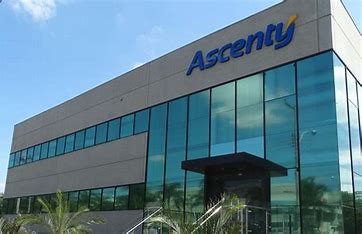Region in the North and Northeast has potential for 7.5bn barrels
11/11/2022
/i.s3.glbimg.com/v1/AUTH_37554604729d4b2f9f3eb9ad8a691345/internal_photos/bs/2022/g/P/2Jj4pMSBaqZ71rktuDxg/11emp-100-margem-b3-img01.jpg)
Magda Chambriard — Foto: Leo Pinheiro/Valor
Despite environmental sensitivities, Petrobras will release this month a business plan that reinforces its intention to open a new exploratory frontier in deep waters in the so-called Equatorial Margin. This is the region between the coast of Rio Grande do Norte and Oiapoque, Amapá, in the far north of the country, and includes the mouth of the Amazonas River, Pará-Maranhão, Barreirinhas, Ceará and Potiguar basins.
Petrobras’s goal is to ensure a new production front starting in the 2030s, to replace the loss of reserves with the advance of pre-salt extraction, which began 12 years ago. Experts assess that the cycle of great potential discoveries in the pre-salt is over, hence the priority given by the company to the Equatorial Margin.
“It is a very promising region,” says Magda Chambriard, former director general of the National Petroleum Agency (ANP) from 2012 to 2016. In her view, the environmental sensitivity of the Margin exists, but the environmental risks are reduced by the fact that the activities are carried out in a region far from the coast and with reserves in deep water. O Globo’s columnist Lauro Jardim informed on Wednesday that Ms. Chambriard would be a name to preside Petrobras.
Sought by Valor, Ms. Chambriard said that her name has been mentioned for the government transition by the president of the Legislative Assembly of Rio de Janeiro (Alerj), André Ceciliano. “André [Ceciliano] is my boss at Alerj and is interested in my participation in the transition for the benefit of Rio.”
Today, Petrobras’s production is concentrated in the Campos and Santos Basins, in the Southeast region, and eventual discoveries in the Equator region may expand the state-owned company’s presence in the North and Northeast regions. It is necessary to consider, however, the social and environmental sensitivities of the Equatorial Margin. The list includes the proximity to the Amazon rainforest and the existence of marine structures similar to corals, in addition to the flow of sea currents that, in case of accidents, may extend eventual leaks to neighboring countries, such as French Guiana.
The Margin is considered a new exploratory frontier since there is low geological knowledge compared to other more explored areas in the country. According to the former director of the ANP, Felipe Kury, the region may be “the new Brazilian pre-salt,” with the possibility of producing from 5 billion to 7.5 billion recoverable barrels of oil. He estimates an initial in situ volume in these basins of 20 to 30 billion barrels of oil, equivalent to almost half of the resources discovered in the pre-salt. With the exhaustion of the potential for new major discoveries in Campos and Santos, the Equatorial Margin becomes the candidate for a new production hub.
The new Petrobras planning for the years 2023 to 2027 is expected to have an update concerning the previous plan, released at the end of 2022, but without major changes in the ambitions drawn in the Equatorial Margin, for now. An expansion of activities beyond the South and Southeast regions is expected. One of the efforts to decentralize investments includes, for example, the start of deepwater production in the Sergipe-Alagoas Basin, which is not part of the Margin.
In the 2021 plan, the company said it intended to allocate $2 billion in investments to the Margin, 38% of the total set aside for exploration from 2022 to 2026. The goal is to drill 14 exploratory wells in this region by the end of the period. An environmental permit process is underway at Brazil’s environmental protection agency Ibama for Petrobras to start the first deepwater drilling off the coast of Amapá, in the mouth of the Amazonas Basin.
According to sources, the company has accelerated hiring for this activity and the permit is expected to be issued later this year so that drilling can begin quickly. “Petrobras is working technically for the permit to be issued, to meet [the requirements of] the characteristics of the place. The currents, for example, are different from other basins where the company operates,” said a source.
The definition of the company’s strategy in this area will depend on the results of this first well. Sources say that, so far, the licensing follows the normal Ibama procedures and there have been no requirements beyond the requests normally expected in those processes.
In September, units of the Federal Prosecution Service (MPF) in Pará and Amapá issued a recommendation that Ibama should not grant the permit under the current conditions. The prosecutors say there was no prior consultation with indigenous communities in Amapá and quilombola (descendants of escaped slaves) and riverside communities in Pará, which will be impacted. According to them, the Karipuna, Palikur-Arukwayene, Galibi Marworno, and Galibi Kali’na peoples will have their lands affected by the construction of an air base with an expected 3,000% increase in air traffic, while Para’s quilombola and riverside communities may suffer impacts on fishing activities and from the reception of waste.
Fernando Borges, the chief exploration and production officer at Petrobras, said in a conference call last week that the company is complying with the entire licensing process and has held three public hearings with local communities. Gabriela Câmara, a federal prosecutor in Amapá, says that the consultations had a low quorum and that it is necessary to hold new meetings with the traditional peoples. In the case of the people of Oiapoque, for example, there is a specific consultation protocol, which has not yet been followed.
The prosecutor also says that Petrobras must present a new Spill Dispersion Forecasting Model, a document that guides responses to potential accidents. The initial model was presented in 2015 and should be updated. “The MPF recommends that Ibama does not issue the permit under the current conditions. If this happens, the MPF will possibly take the issue to court,” she said. One of the next steps for issuing the environmental permit is to carry out a pre-operational simulation, which is expected to begin in the coming weeks.
Petrobras is betting on the ability to reduce costs and risks in the region with the use of technologies such as artificial intelligence and big data. Experts emphasize that the technological advance of the equipment also helps to better deal with the strong sea currents in that area. One of the main environmental controversies is related to the marine structures supposed to be corals. The Marine Geology professor at the Fluminense Federal University, Alberto Figueiredo, says that the structures found in the region are calcareous algae on granites, and not coral reefs, and that most of them are lifeless. The structures are even similar to those found in the basins where Petrobras produces, says Mr. Figueiredo.
The Brazilian Institute of Oil and Gas (IBP) points out that the structures are in depths of up to 120 meters, while the planned well-drilling activities will be far from these formations, more than 2,000 meters deep. The entity points out that oil spill modeling was done for more than 600 different scenarios and that there is no possibility of an eventual accident leading to leaks that reach the Brazilian coast. Daniela Jerez, an analyst of public policies at WWF, said there is still little knowledge about the region’s biodiversity, which increases the risks.
Allan Kardec, CEO of the Maranhense Gas Company (Gasmar) and a former director of the ANP, says that the states in the area of influence of the Equatorial Margin want to be listened to. “We want to take a stand to conduct the debate in a way that is not imposed by Brasília. We want to have a voice to dialogue and be able to encourage regional development,” said Mr. Kardec.
Production on the Brazilian Equatorial Margin is viable, in the view of specialists in the energy sector. So far, however, history points in a different direction. There are more than 600 wells drilled in the region, but most of the drilling in these basins took place before the 2000s and, among those drilled in the last 20 years, most did not find enough oil to make commercial activities viable.
In the past decade, oil companies other than Petrobras have become interested in the area again, but have been unable to proceed with exploratory campaigns. In 2017, British Petroleum even started logistical planning for activities in Pará, but the process did not move forward.
The following year, French oil company TotalEnergies had a request to drill in the mouth of Amazonas denied by Ibama. The environmental agency argued that the company failed to present appropriate logistical solutions for potential emergency scenarios. Sought about the possibility of returning to operate in the region, TotalEnergies declined to comment, and BP said it continually evaluates opportunities but does not comment on future investments. Ibama did not reply to a request for comment.
Last year, Petrobras took over TotalEnergies and BP’s stakes in five concessions where it was a partner of the companies in Margin. Executives with the state-owned company, however, have stressed that the company would not enter the venture alone and that it will seek the support of partners, should it develop discoveries in the region. It was precisely the presence of large international oil companies that made the activities on the Guyanese margin feasible.
Given the history of difficulties in issuing permits, there are doubts in the industry about the interest of oil companies in obtaining new areas on the Margin. The delay in issuing permits, however, has not been exclusive to this region. The Ministry of Mines and Energy has two working groups in progress to improve the environmental assessment process before the bidding for areas, to give more predictability and legal security to the licensing.
*By Gabriela Ruddy, Fábio Couto — Rio de Janeiro
Source: Valor International

/i.s3.glbimg.com/v1/AUTH_37554604729d4b2f9f3eb9ad8a691345/internal_photos/bs/2022/E/u/QXpMKcQTebguAfg9PrzQ/executivo-gustavo-werneck-ceo-gerdau-cred-julio-bittencourt.jpg)

/i.s3.glbimg.com/v1/AUTH_37554604729d4b2f9f3eb9ad8a691345/internal_photos/bs/2022/w/o/WNDMSfQrqbeWfA9qiGlg/25102021nestle012.jpg)
/i.s3.glbimg.com/v1/AUTH_37554604729d4b2f9f3eb9ad8a691345/internal_photos/bs/2022/G/B/DiuOkVQXiig95kXAOabA/250822-20btg-20029.jpg)
/i.s3.glbimg.com/v1/AUTH_37554604729d4b2f9f3eb9ad8a691345/internal_photos/bs/2022/c/O/mUCbQYR6OVQePPgnACng/img-6014.jpg)

/i.s3.glbimg.com/v1/AUTH_37554604729d4b2f9f3eb9ad8a691345/internal_photos/bs/2022/j/M/3hKK2vSlyI0TvM0pz2xg/igua-saneamento-divulgacao.jpeg)
/i.s3.glbimg.com/v1/AUTH_37554604729d4b2f9f3eb9ad8a691345/internal_photos/bs/2022/P/K/qTTGOMQZmojfUyVF0Xkg/281022claudia8.jpg)
/i.s3.glbimg.com/v1/AUTH_37554604729d4b2f9f3eb9ad8a691345/internal_photos/bs/2022/X/s/vv8z2ZTyAAvVTgLB7mWw/281022danilo16.jpg)
/i.s3.glbimg.com/v1/AUTH_37554604729d4b2f9f3eb9ad8a691345/internal_photos/bs/2022/o/q/pmkuzTSgG8rYHI3EPHuQ/280621paula19.jpg)